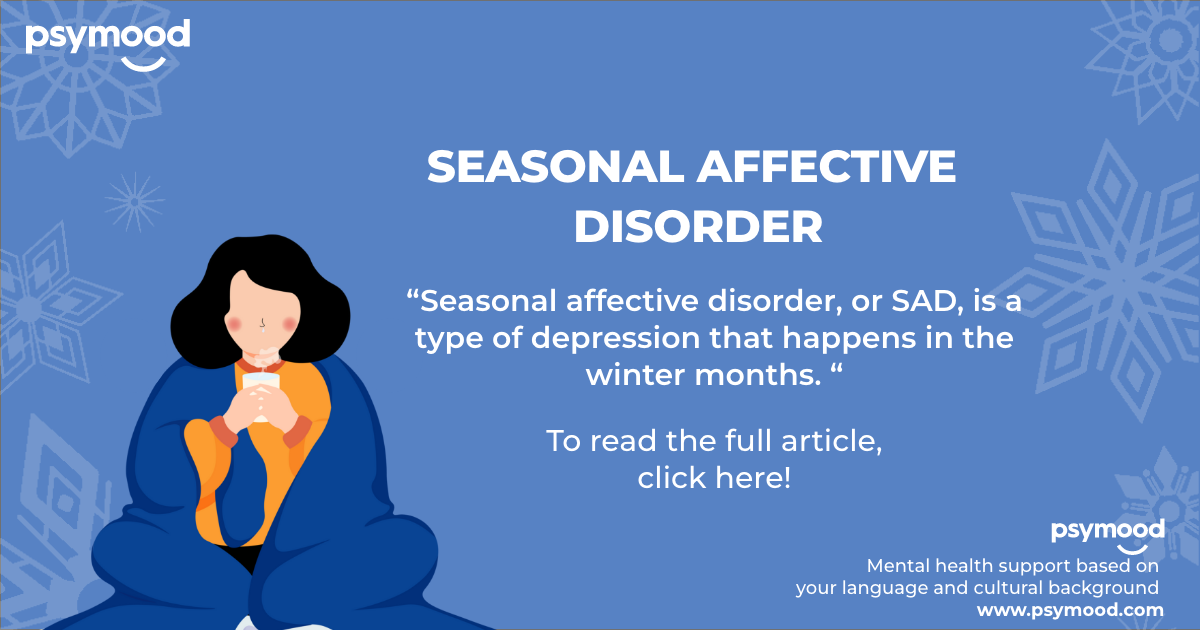Seasonal affective disorder, or SAD, is a type of depression that happens in the winter months. SAD occurs when seasons change and occurs around the same time each year and it’s a little more severe than just feeling sad or blue. SAD is essentially the same as major depression, but it follows a seasonal pattern.
SAD is more common among women and is diagnosed four times more often in women than men.
Symptoms of SAD
SAD symptoms include: feeling tired all the time, feeling sluggish during the day, being unable to sleep for extended periods of time, having trouble concentrating during the day, having no interest in doing anything fun, experiencing cravings, overeating or under-eating, weight gain or weight loss, feelings of worthlessness, hopelessness, and feelings of giving up.
What Causes SAD?
The causes of SAD are complicated and vary from person to person. Some people are genetically predisposed to have better moods during certain seasons of the year. Some people who are diagnosed with other mental disorders such as bipolar disorder may be at risk for SAD more than others.
Some risk factors for developing SAD include; living far from sunlight or cabin fever, having a family history of mental illness, being female, growing up in an environment where there is little sunlight (like Alaska), living in an area where there is very little sunlight available during winter months (like Maine), other underlying mental and physical conditions, a lack of outdoor activities, a change in your biological clock (circadian rhythm), and changes in hormone levels (a drop in serotonin and melatonin levels).
Treatment for SAD
Like depression and other disorders, there are many therapies and treatments available for SAD. The most common and effective treatments for SAD are light therapy, psychotherapy, and prescription medication.
Light Therapy
Light therapy or phototherapy, is a form of therapy that utilizes light. An individual undergoing light therapy will sit a few feet from a special light box and will be exposed to bright lights for the first hour of their day each day. Light therapy is meant to mimic natural outdoor light and helps change brain chemicals to improve the patient’s moods. Light therapy is very effective and has minimal side effects.
Psychotherapy
Psychotherapy is another option available to individuals suffering from SAD, the most common form being cognitive behavioural therapy. Psychotherapy is meant to help individuals talk through their emotions to better understand them, learn healthy ways of coping and processing, learn to identify negative thoughts when they occur, manage stress and other emotions associated with SAD and learn healthy coping mechanisms.
Medication
Sometimes light therapy and psychotherapy are not enough to offset the symptoms of SAD. In these cases, people with SAD may benefit from an antidepressant medication. However, antidepressant medications may have more side effects than other treatments and should always be discussed with a healthcare provider.
PsyMood is a digital tool designed to help you find the support you need in the language that you are most comfortable with. PsyMood considers cultural background, geographical location, interests, and personal needs, amongst other factors, to pair you with service providers for either online or in-person therapy sessions.
Check out our other blogs here!


.png)
.png)
.png)
Recent Comments